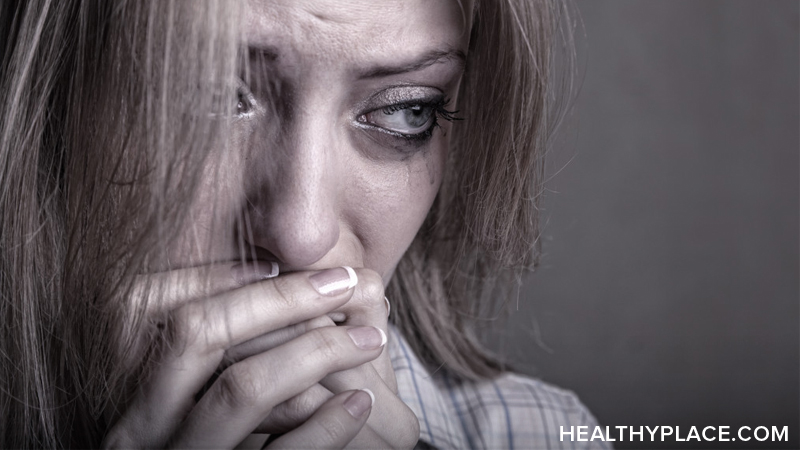What Is Posttraumatic Stress Disorder (PTSD)?

Posttraumatic stress disorder (PTSD) is an illness that occurs after a trauma in which there is physical harm or the threat of physical harm. Posttraumatic stress disorder is a mental illness: An anxiety disorder. Posttraumatic stress symptoms occur for more than one month and typically develop within three months of the traumatic event, although in some cases there is a greater delay. If posttraumatic stress exists for less than one month, acute stress disorder may be diagnosed.
What is Posttraumatic Stress Disorder Like?
Posttraumatic stress disorder can be crippling as PTSD symptoms creep into everyday life. A person with PTSD may be feeling fine one moment, and a few minutes later they're suddenly reliving the traumatic event while on the bus on the way to work. This may lead to anxiety symptoms like heart palpitations, sweating, and shortness of breath. By the time the person with PTSD gets to work, their anxiety level may be so high that the slightest noise can make them jump or even scream.
Posttraumatic stress disorder affects 7.7 million adult Americans and a significant number of children live with PTSD as well. One study found that 3.7% of adolescent boys and 6.3% of adolescent girls had posttraumatic stress disorder. Women typically experience more trauma than men, particularly owing to sexual assaults, and so the number of women with PTSD is much higher than that of men (PTSD Statistics And Facts).
With help, the prognosis of posttraumatic stress disorder is positive. On average, those who receive treatment for PTSD experience symptoms for 36 months as compared to 64 months for those who do not receive help.1 However, for some, PTSD lasts much, much longer. Treatment can include therapy, medications and PTSD support groups.
Posttraumatic Stress Disorder Definition
Several criteria must be met in order to be diagnosed with posttraumatic stress disorder; the PTSD definition contains six parts.
- Experiencing or witnessing a traumatic event where there is a physical threat; a response of helplessness and fear
- Re-experiencing of the event
- Avoidance of anything related to the event; inability to remember parts of the event; detachment from others; reduced visible emotion; a sense of a shortened life
- Sleep problems; decreased concentration; always searching for possible dangers; anger; exaggerated response when startled
- Symptoms lasting more than one month
- Impairment of functioning due to symptoms
If you're concerned that you might have post-traumatic stress disorder, take our PTSD test.
Posttraumatic Stress Disorder (PTSD) in Children
Posttraumatic stress may also be experienced by children, although it may be experienced slightly differently. Young children may show posttraumatic stress reactions similar to reactive attachment disorder and are strongly affected by their parent's response to the stress.
Children, age 6-11, are more likely to withdraw or become disruptive. Posttraumatic stress disorder may also cause these children physical pain (such as stomach aches) without any medical cause. Children may also relive the trauma through repetitive play.
Children, age 12-17, have PTSD symptoms similar to adults.
See PTSD in Children: Symptoms, Causes, Effects, Treatments
Posttraumatic Stress Disorder (PTSD) in the Military
Posttraumatic stress disorder is common in the military with 30% of those who spend time in a combat zone developing the disorder. Unfortunately, those in the military are less likely than average to get help for PTSD as they feel, mistakenly, that it is a sign of personal weakness. Those in the military also fear a negative impact on their career if they get help for posttraumatic stress disorder. A person does not have to be involved directly in a casualty-related event in order to develop PTSD. For some, Military Sexual Trauma (MST) or any training or combat zone activity can be traumatic.
APA Reference
Tracy, N.
(2021, December 21). What Is Posttraumatic Stress Disorder (PTSD)?, HealthyPlace. Retrieved
on 2026, January 19 from https://www.healthyplace.com/ptsd-and-stress-disorders/ptsd/what-is-post-traumatic-stress-disorder-ptsd


